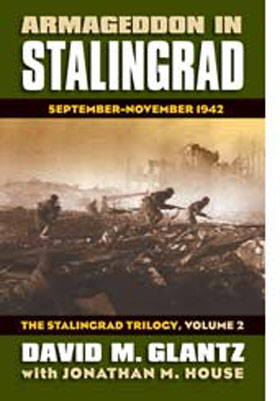
PRODUCT SEARCH
Free Shipping on orders of 8 or more books.
Applies to US Shipments only.
|
Shopping cart is empty.
|
ARMAGEDDON IN STALINGRAD SEPTEMBER - NOVEMBER 1942 THE STALINGRAD TRILOGY VOLUME 2
Book Type: C By David Glantz. The German offensive on Stalingrad was originally intended to secure the Wehrmachtâs flanks, but it stalled dramatically in the face of Stalinâs order: âNot a Step Back!â The Sovietsâ resulting tenacious defense of the city led to urban warfare for which the Germans were totally unprepared, depriving them of their accustomed maneuverability, overwhelming artillery fire, and air supportâand setting the stage for debacle. Armageddon in Stalingrad continues David Glantz and Jonathan Houseâs bold new look at this most iconic military campaign of the Eastern Front and Hitlerâs first great strategic defeat. While the first volume in their trilogy described battles that took the German army to the gates of Stalingrad, this next one focuses on the inferno of combat that decimated the city itself. Previous accounts of the battle are far less accurate, having relied on Soviet military memoirs plagued by error and cloaked in secrecy. Glantz and House have plumbed previously unexploited sourcesâincluding the archives of the Peopleâs Commissariat of Internal Affairs (NKVD) and the records of the Soviet 62nd and German Sixth Armiesâto provide unprecedented detail and fresh interpretations of this apocalyptic campaign. They allow the authors to reconstruct the fighting hour by hour, street by street, and even building by building and reveal how Soviet defenders established killing zones throughout the city and repeatedly ambushed German spearheads. The authors set these accounts of action within the contexts of decisions made by Hitler and Stalin, their high commands, and generals on the ground and of the larger war on the Eastern Front. They show the Germans weaker than has been supposed, losing what had become a war of attrition that forced them to employ fewer and greener troops to make up for earlier losses and to conduct war on an ever-lengthening logistics line. 123 photographs, 49 tables, 97 maps, 6 x 9 900+ pp. 
|


